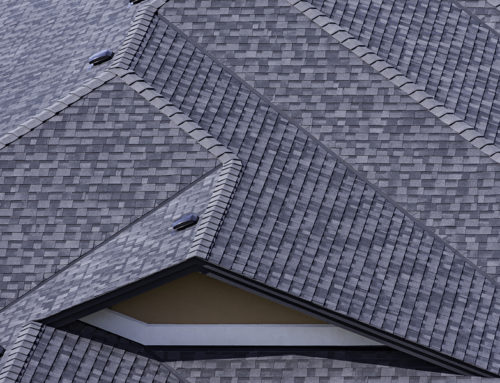Roofing underlayment is one of many essential components that make up a roof.
Available in multiple types, this seemingly insignificant layer places under the exterior roofing materials actually plays a critical role in how well any roof installation done by a professional roofing company performs.
Before assuming any underlayment product used by a roofer will work on your roof, it is important to understand how they work and which products work better for which applications.
What Is The Purpose Of Underlayment?
Underlayment is a thin protective layer that roofing companies install between the roof decking and external roofing materials.
It is a breathable, water-resistant barrier that protects a roof from moisture that might get under the shingles or other exterior materials.
Although a professional roof installation job would normally be watertight on its own, the underlayment provides secondary protection to the decking in case any moisture does seep under the shingles.
Because underlayment is water-resistant rather than waterproof, it also allows for a certain amount of breathability to aid roof ventilation.
Felt Vs. Synthetic Underlayment - Pros and Cons
There are two types of underlayment used by roofers today: felt and synthetic.
Although they both serve the same purpose, each has definite pros and cons that should be considered before choosing the one appropriate for your roof.
Felt Underlayment - A fabric made of fiberglass fibers and asphalt, felt underlayment is one of the first materials ever used by roofing companies to provide an element of water-tightness to any roof.
PRO
- Readily available in multiple sizes and thicknesses for nearly any application from most suppliers.
- Less costly as it is made from less-expensive materials, much more cost-effective for the right roof.
CON
- Prone to tearing as this less durable material can tear more easily.
- Heavier and can add significantly more weight when installed on a roof and take longer to install.
- May absorb water and become wrinkled under the shingles.
- Slippery which makes it unsafe to work on and more challenging to install.
- Some warranty Issues as roofers and roofing product manufacturers may void warranties if felt underlayment is used.
Synthetic Underlayment - A fabric made of synthetic polymers, synthetic underlayment has become a popular choice for many roofing companies due to its many positive attributes in comparison to standard felt underlayment.
PRO
- More moisture-resistant, non-absorbent, and repels moisture.
- Lightweight and faster to install with 1/4th the weight of traditional underlayment.
- Durable, strong, and tear-resistant.
- Non-slip surface that is much safer for a roofing installation.
- Recommended by most materials manufacturers and professional roofing companies.
CONS
-
Depending on type and thickness, synthetic may be up to four times the price of comparable felt underlayment.
Which Underlayment Is Best for Your Roof?
Underlayment is something that every roof needs, regardless of the type chosen.
Although standard felt underlayment is great to use in drier regions where moisture is not much of a concern or when cost is a limiting factor, synthetic underlayment is much preferred by most roofing companies because of its many positive features.
Discuss the options with your roofer before finalizing any roofing job!






